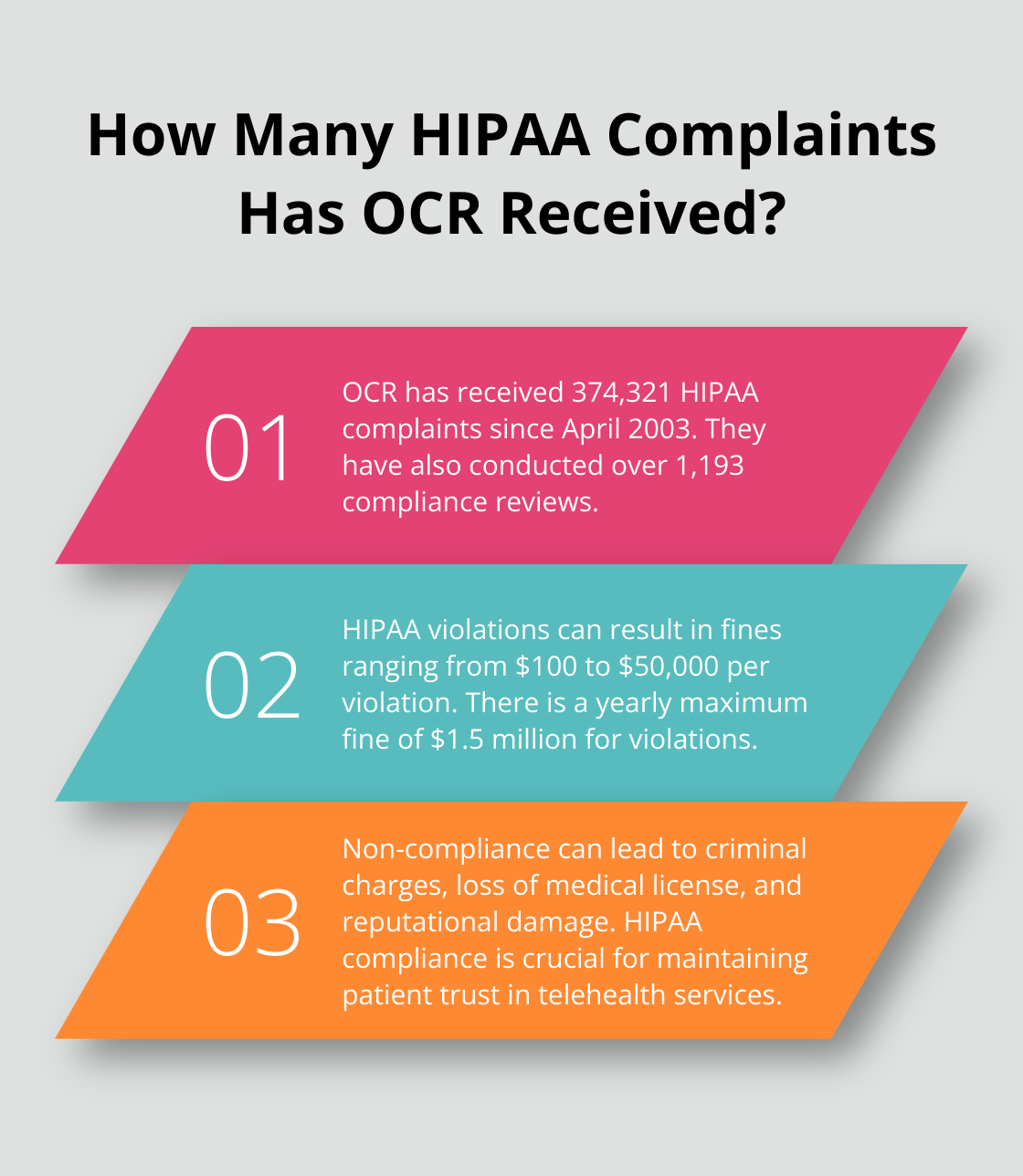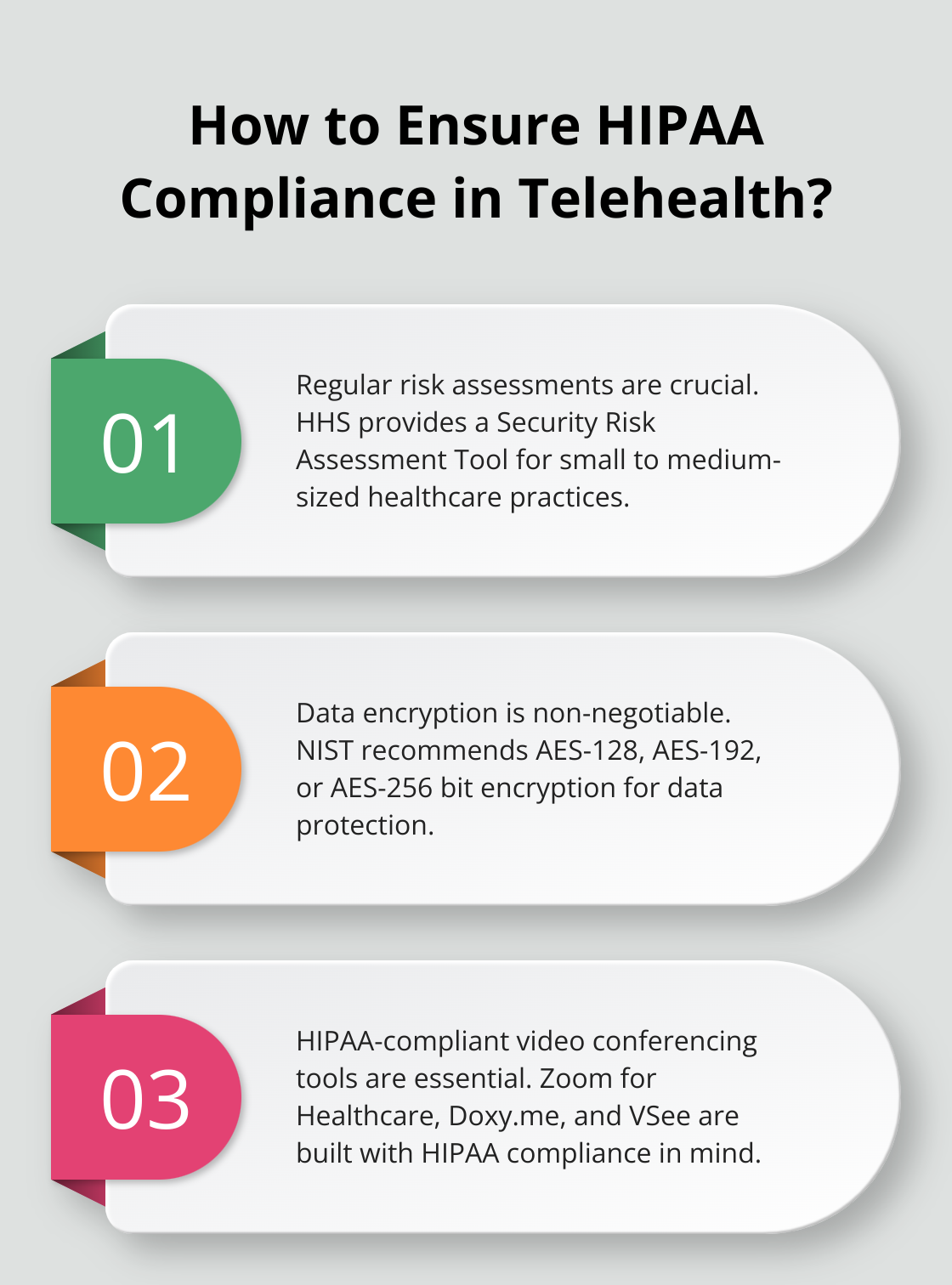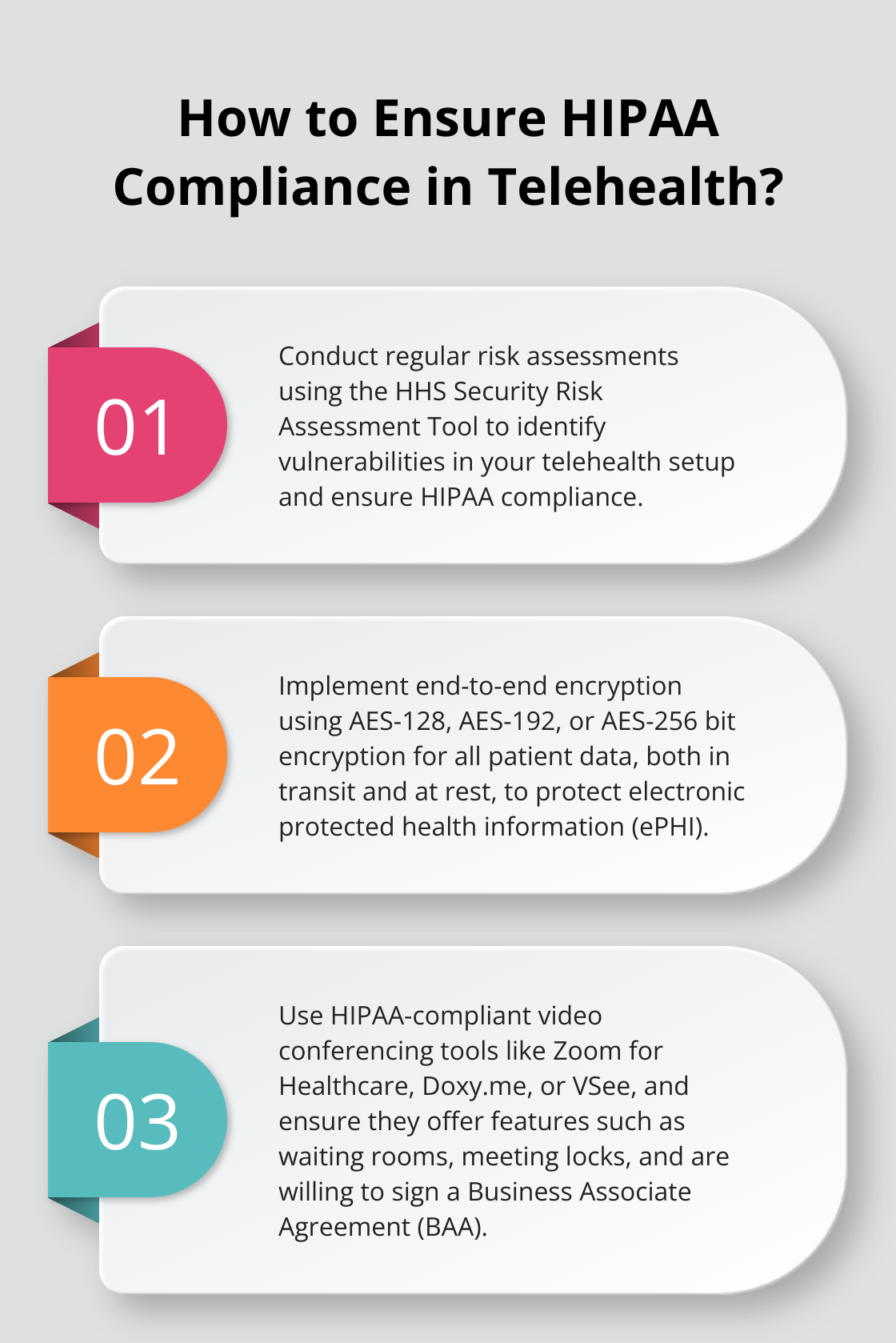Telehealth. HIPAA compliance. It’s like the peanut butter and jelly of the digital healthcare age. Seriously. As virtual care is becoming as common as your morning coffee, keeping patient data locked up tight? More crucial than ever.
Enter ScriberJoy. We get it—healthcare providers are wandering through the labyrinth of telehealth regulations (blindfolded, no less). But fear not, because this guide? It’s the roadmap you need to cruise through HIPAA compliance like a pro while serving up first-class remote care. Trust us, it’s all about the knowledge and the tools—equip yourself, be prepared, and keep rocking that healthcare, virtually.
What is HIPAA and Why Does It Matter for Telehealth?
The Essence of HIPAA in Healthcare
HIPAA – our trusty Health Insurance Portability and Accountability Act – is more than just some policies. It’s like an invisible suit of armor around patient privacy in the good ol’ U.S. of A. In the telehealth universe, HIPAA is the North Star keeping those virtual doctor’s visits safe and secure. (Translation: don’t mess with it.)
HIPAA Fundamentals for Telehealth Providers
Are you a telehealth guru? Then, HIPAA needs to be your best friend. Priority number one? Protect that precious electronic protected health information (ePHI). We’re talking everything – from patient names to their deepest, darkest medical secrets and even the almighty payment info.

But wait, there’s more! Providers must:
- Only let the cool kids (a.k.a. authorized personnel) access ePHI
- Keep conversations secure – no eavesdropping allowed
- Have a rock-solid plan for those pesky data breaches
The Steep Cost of Non-Compliance
Ignore HIPAA, and you’re looking at a financial horror show. Not kidding. The Office for Civil Rights (OCR) isn’t just playing around with this stuff. Fines can skyrocket from $100 to a whopping $50,000 per violation. (There’s a yearly chill-out cap of $1.5 million, but still…) Oh, and did we mention the legal drama?
Mess this up and you’ll face:
- Criminal charges knocking at your door
- Bye-bye medical license
- A reputation hit – the kind that sticks like gum to a shoe
Since April 2003, the OCR’s inbox has been flooded with 374,321 HIPAA complaints. Throw in over 1,193 compliance reviews, and you’ve got a solid reason to keep HIPAA close.
Practical Steps for HIPAA Compliance
- Risk Assessments Galore: Always be on the lookout for telehealth gremlins.
- Encrypted Tools: Only roll with HIPAA-certified video chatting machinery.
- Training Day: Get everyone (yes, everyone) fluent in HIPAA talk.
- Breach Response Plan: Arm yourself for the worst-case scenario.
- Diligent Documentation: Keep a paper trail as if your HIPAA life depends on it (because it kinda does).
HIPAA isn’t just about dodging fines; it’s about gaining – and keeping – that precious patient trust. In today’s tech-driven world, trust is the real gold mine.
Moving forward, buckle up as we dive into those critical steps to ensure telehealth HIPAA compliance. Mastering this maze of digital healthcare is key, and it starts with putting patient privacy on a pedestal.
How to Implement HIPAA Compliance in Telehealth
Telehealth HIPAA compliance-it’s like trying to nail custard to the wall. Constant vigilance, adaptation… rinse, repeat. So, where do we start?
Conduct Regular Risk Assessments
First, grab your magnifying glass. Regular risk assessments-they’re your compliance GPS. Pinpoint where things could go off the rails in your telehealth setup. Are those video calls Fort Knox secure? Is patient data wrapped in an encryption blanket?

The U.S. Department of Health and Human Services (HHS) hands you a lifeline with their Security Risk Assessment Tool. Perfect for small to medium-sized healthcare practices drowning in HIPAA compliance woes. Make it your trusty sidekick.
Encrypt Everything
Data encryption-non-negotiable. Encrypt like your practice’s life depends on it. Every scrap of patient info, whether zipping through the ether or taking a nap on your server, needs armor. Think end-to-end encryption and beefy encryption algorithms for data in storage.
NIST gives the gold star to AES-128, AES-192, or AES-256 bit encryption. Anything less? You’re playing with fire (and risking your practice’s reputation).
Secure Your Communication Channels
Your telehealth platform needs to be Fort Knox… on steroids. The rules are simple:
- Go for HIPAA-compliant video conferencing tools.
- Slam in strong authentication measures.
- Keep those system updates and patches flowing.
Check out Zoom for Healthcare, Doxy.me, and VSee. They’re built with HIPAA compliance woven in. Still, do your homework – double-check their security chops and ensure they’ll sign a Business Associate Agreement (BAA).
Train Your Staff Rigorously
Your team? They’re your first responders to HIPAA mishaps. Train them until it’s second nature.
Hit the basics hard:
- What’s Protected Health Information (PHI)?
- How vital are strong passwords and two-factor authentication?
- Spotting and flagging security breaches.
But, basics are just the warm-up. Role-play it out. Quiz them like it’s finals week. Make HIPAA compliance your cultural anthem.
Remember-your staff’s the weak link if there is one. Don’t let human error be your downfall.
Choose HIPAA-Compliant Tools
Pluck tools and software that scream HIPAA compliance from the rooftops. From your conferencing platform to medical transcription software. (ScriberJoy, for example, is like your HIPAA guardian angel with its built-in compliance and top-notch accuracy.)
Taking these steps means more than dodging fines or legal headaches-it’s about earning and keeping your patients’ trust. In today’s digital world, that trust? Priceless. Next, we’ll dive into the nitty-gritty, showcasing tech tools that’ll keep your HIPAA compliance ship shape in your telehealth practice.
What Tools Ensure HIPAA-Compliant Telehealth?
Telehealth HIPAA compliance – it’s all about having the right tech in your corner. Let’s dive into the tools that’ll keep your virtual practice secure and compliant.
Video Conferencing: Your Digital Exam Room
Your video platform – it’s the cornerstone of telehealth. Zoom for Healthcare, Doxy.me, and VSee are front-runners in the HIPAA-compliant video conferencing arena. They offer end-to-end encryption, secure chat features, and Business Associate Agreements (BAAs) – basically, your digital handshake.

Zoom for Healthcare rolls out the red carpet with 256-bit AES encryption in a HIPAA-compliant setting. It boasts features like waiting rooms and meeting locks to manage patient access (imagine a virtual bouncer for your digital office).
EHR Systems: Your Digital Filing Cabinet
Got to have a secure Electronic Health Record (EHR) system – think of it as your digital vault. Consider big hitters like Epic, Cerner, or Athenahealth. They serve up robust security elements like role-based access control and audit trails.
Epic, often the choice of large health systems, offers a comprehensive telehealth module that integrates smoothly with its EHR. This integration ensures a seamless, secure flow between virtual visits and patient records – like having a super-organized digital assistant that never needs a coffee break.
Access Control: Your Digital Gatekeeper
Multi-factor authentication (MFA) is your first line of defense – not just a smart move, a HIPAA requirement. Deploy MFA across all your systems, from EHRs to emails.
Duo Security, part of the Cisco family, offers a healthcare-friendly MFA solution. It supports a range of authentication methods – push notifications, hardware tokens, biometrics – you name it.
Medical Transcription: Your Digital Scribe
Getting transcription right is essential – and ScriberJoy’s the pro. With built-in HIPAA compliance, it turns audio notes into rock-solid, secure documentation.
ScriberJoy harnesses AI-powered transcription backed by human verification to ensure data accuracy and protection. Its customizable templates streamline operations, letting you reclaim time in your virtual practice.
Secure Messaging: Your Digital Courier
HIPAA-compliant messaging platforms – they’re the secure line between healthcare providers and patients. TigerConnect and OhMD bring features like message encryption, self-destructing messages, and remote wipe capabilities.
These tools lay down the foundation of a HIPAA-compliant telehealth practice. Regular training, updates, audits – keep up with those, and these technologies become your virtual practice’s competitive edge.
Final Thoughts
Telehealth and HIPAA compliance-it’s the Batman and Robin of modern healthcare. Straight up, if you’re a healthcare provider, you need to pick the right tech to protect patient data with your life. We’re talking HIPAA-compliant video conferencing, top-notch secure EHR systems, and ironclad access controls. These aren’t just tools; they’re your fortress for a secure telehealth setup.
HIPAA-compliant medical transcription software like ScriberJoy? That’s your secret weapon. It ramps up documentation accuracy while keeping security sky-high. But don’t get comfy-keep tabs on things. Regular staff training and staying hip with the latest HIPAA updates are your compliance lifelines. As telehealth tech takes leaps forward, our strategy for safe patient data needs to keep pace.

Put patient privacy and data security first, and you build trust, boost your reputation, and help patients get better results. A solid HIPAA compliance plan isn’t just a checklist; it’s your edge in the data breach battleground. Healthcare providers who ace this complex telehealth maze can safeguard patient info while confidently leading the charge in this brave new world.

Leave a Reply
You must be logged in to post a comment.